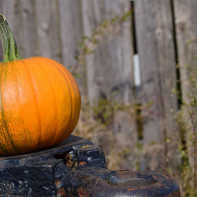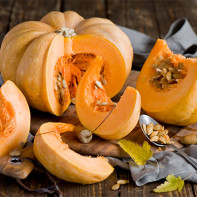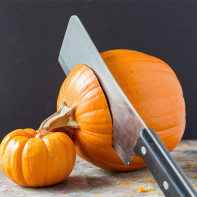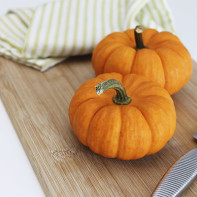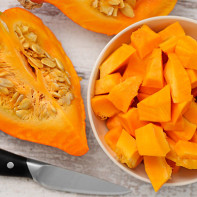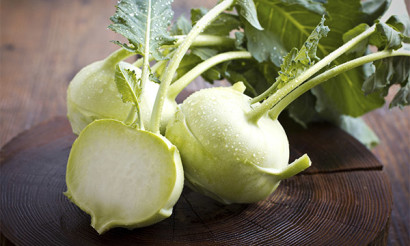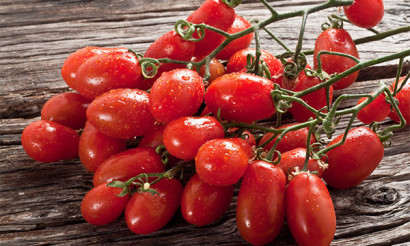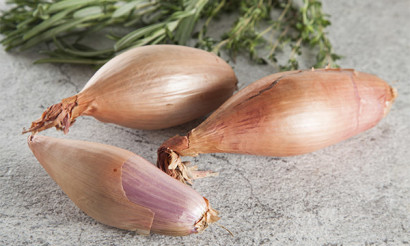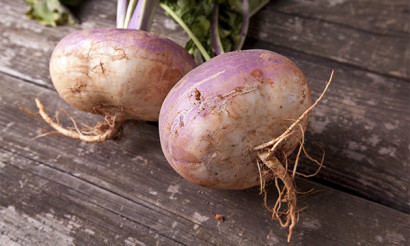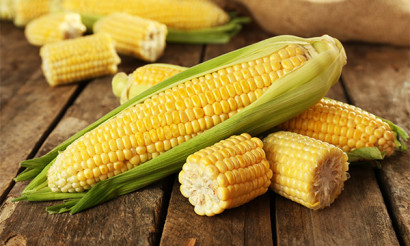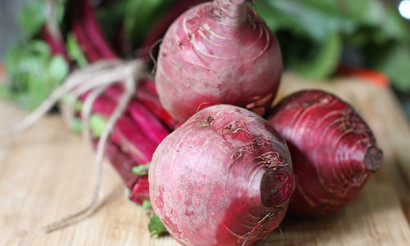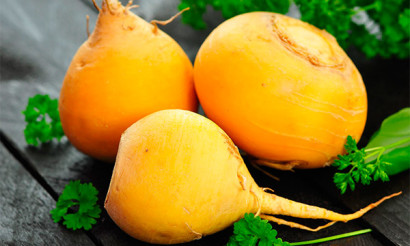Pumpkin: composition, types, useful properties and contraindications
Pumpkin is the "food of the gods", so about this vegetable some nutritionists say. In this case, such a high title she received not only because its composition contains many useful substances, but also because of the bright life-affirming color, which will help to get out of depression and give joyful emotions.
- What is a pumpkin
- Types
- What is the difference between a nutmeg pumpkin and an ordinary pumpkin
- Composition and calories
- How to use pumpkin
- General benefits
- For Women
- For Men
- In Pregnancy
- For breastfeeding
- For children
- Slimming down
- Which Pumpkin is Healthier
- Boiled
- Dried
- Baked
- Raw
- Benefits and Harms of Pumpkin Seeds
- Pumpkin Juice: Benefits and Harms
- Useful properties of pumpkin seed oil
- Pumpkin rind usefulness
- How to peel a pumpkin from its tough peel
- Pumpkin in Medicine
- Diabetes
- For pancreatitis
- For Gastritis
- For Intestines
- For constipation
- For gout
- For colitis
- For the liver
- For hemorrhoids
- Pri cholecystitis
- Pumpkin-based folk medicine recipes
- Oral problems
- Problems with the nervous system
- Insomnia
- For arthritis
- For liver and gastrointestinal tract
- Pumpkin in cosmetology
- For Face
- For hair
- Harm and Contraindications
- How to choose and store the pumpkin
- Can I freeze it?
- How to eat pumpkin correctly
- How much can I eat per day.
- Can I Eat at Night and on an empty stomach?
- Can I Eat Raw Pumpkin?
- What can be cooked from pumpkin: Recipes
- Soup
- Porridge
- Pancakes
- Cutlets
- Caviar
- Candied fruits
- Jam
- Compote
- Juice
- Smoothie
- Baked Pumpkin
- Can I Give Pumpkin to Animals
- Interesting facts about the pumpkin
Some time ago, there was even an experiment that proved that using a pumpkin as part of the interior - so that it is always in view - will give more positivity and bring joyful emotions into life. However, this can only apply to vegetables that have a bright orange coloration.
What is a pumpkin
Pumpkin is either a vegetable or a berry, depending on the classification (in the culinary and domestic classification, it is a vegetable, in botany, it refers to berries). There are two versions of the origin of the name "pumpkin". Based on the first, it is derived from the common Slavic "tuku", meaning "to fat". The other version implies borrowing the word from the Pelagian language - "kuku", which means "plump fruit".
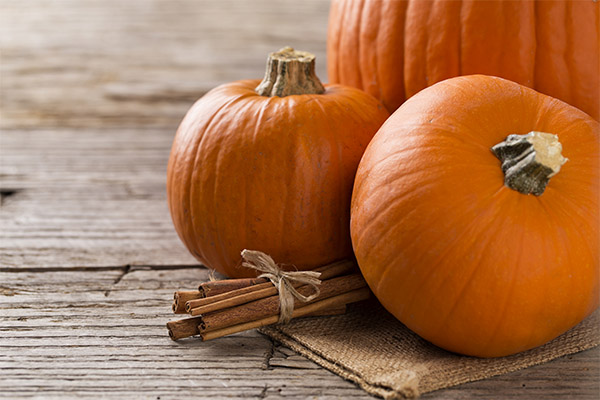
In Mexico, in the valley of Oaxaca, archaeological excavations have found remains that confirm the fact that already about 5 thousand years ago ancient people were engaged in the cultivation of this crop. And they used this vegetable not only as food, but also as a material for objects in the arrangement of dwellings. The vegetable was first discovered by European seafarers, who came to the American continent to explore new lands. It is important to note that in one of the church books, dated 1505, there is an image depicting the stems, flowers and fruits of the pumpkin.
Based on the Byzantine references, even in the 10th century people already knew about the existence of this vegetable. If we talk about scientific works, the culture was first described in the 16th century by the monk Bernardino de Sahaguna. The monk went to the American continent as an educator, but in addition, he was actively engaged in the study of the nature of the exotic area and the arrangement of life of the Aztecs. He devoted several books to medicine and botany and described the useful properties and characteristics of the pumpkin. Around the same time, the pumpkin began to spread throughout Europe and, having finally gained a foothold in the Old World, moved to Asia.
In the 17th century, the pumpkin was already considered a food crop. However, although the fruit gained widespread popularity, it was not until the 18th century that people became seriously interested in pumpkin oil. In Austria there are documents dating back to 1739 in which pumpkin oil is mentioned, with the mention of its special value. It is not for nothing that the oil is called "green gold". At the same time oil began to be actively used as a medicinal basis for ointments and even tried to apply this product in the military industry.
Types
As a rule, there are three types of pumpkin - hard-shelled, large-fruited and nutmeg. Let's take a closer look at the types.
- Hard-skinned. A mature pumpkin has a very thick dense skin. This species can be classified as early maturing, because the vegetables ripen really quickly (they need less than 30 days). The fruits are not very large, and the seeds are some of the tastiest. This includes bush varieties, which allow you to save a lot of space when growing. Vegetables have a rubbed fruit stalk (the grooves are quite pronounced).
- Large-fruited. The largest and sweetest vegetables. Some varieties contain quite a lot of sugar, sometimes more than watermelons. Vegetables have rounded stalks, the same stem, and kidney-shaped leaves. The seeds may be milky or brownish in color. This species tolerates low temperatures better than others, so the vegetables can be stored for a long time directly in the apartment.
- Muscat. Pumpkins of this variety have a pentahedral stalk with a significant expansion at the base. Seeds are dirty yellow or brown. Pumpkins are rich in vitamins and very tasty. The disadvantages of this species are that they are heat-loving and late maturing vegetables. This can significantly affect the harvest, as vegetables sometimes do not have time to fully mature during the summer season. For this reason, it is recommended to grow them in southern areas.
What's the difference between a nutmeg pumpkin and a regular pumpkin
The nutmeg pumpkin differs in that it has a thinner skin. The skin is very thin and easy to remove with an ordinary knife. It also has a different shape from the others. The fruit is oblong, a little like a zucchini, a little tapered in the middle and thickened at the flowering point. The fruits are yellowish-brown in color, with greenish streaks on them. The flesh has a light nutmeg smell.
Composition and calories
In 100 grams of product contains:
- calories - 22 kcal;
- proteins - 1 gr;
- fats - 0,1 g;
- Carbohydrates - 4.4 g.
Pumpkin contains many useful substances and vitamins. The vegetable is rich in beta-carotene, vitamins (B1, B2, C and others), and minerals (potassium, magnesium, zinc, copper iron and phosphorus).
What is pumpkin good for?

General benefits.
- Strengthens the immune system. Pumpkins contain many carotenoids, which help protect cells from free radical damage. Like carrots, this vegetable is rich in beta-carotene, which improves overall health and strengthens immunity.
- Beneficial for the skin. Because the vegetable contains antioxidants, many companies use it in their skin care products. Pumpkin can even be applied topically to the skin to improve cellular metabolism for smoother, healthier-looking skin. Antioxidants will help eliminate the signs of aging.
- It is a source of vitamin A. Pumpkin is rich in beta-carotene, so with regular consumption of this product, the body will be able to maintain vitamin A levels. A small portion (100-150 grams) of this product will provide the body with a daily dose of this vitamin. Vitamin A is one of the most versatile vitamins that play an important role in maintaining many body functions. It strengthens bone health, maintains the health of the skin and protects the body from infections. In addition, vitamin A promotes good vision, especially in the dark hours of the day.
- It supports digestive function. Fiber plays an important role in maintaining intestinal function, affecting blood glucose levels and even cholesterol levels. It is already known that fiber supports digestive health, but not everyone knows that it can also help get rid of extra pounds. Eating foods rich in fiber can significantly reduce hunger, thus avoiding overeating.
- It is good for your heart. In addition to beneficial antioxidants and fiber that support heart health, pumpkin also contains essential fats and vitamins. One study examined the effects of this vegetable on hypertension. Researchers concluded that the substances in this vegetable not only normalize blood pressure levels, but also protect the heart and aorta.
- Relieves inflammation. The vegetable has anti-inflammatory properties and can suppress the symptoms of arthritis. Pumpkin seed oil is as effective as pharmaceuticals at fighting various inflammations without causing side effects. If you have a toothache or inflammation of the mouth and throat, it is recommended to include pumpkin in your diet, it will help reduce painful symptoms.
- Enriches the body with magnesium. Much of humanity is deficient in magnesium, a mineral used by every organ. This mineral plays an important role in bone and heart health, and is found in more than 300 different enzymes. Magnesium is needed for a variety of tasks, from energy production to nerve and muscle stimulation. By consuming about 30 grams of pumpkin seeds, you can get about 40 percent of the recommended daily allowance of this mineral.
- It is a source of healthy fats. Today, almost all supermarket shelves are occupied by low- and zero-fat products, which in turn has led to an increase in health problems. The human body and brain need fats because they keep them functioning properly. Pumpkin is rich in fatty acids, which the body needs to keep its vital organs working.
- Protects against cancer. Pumpkin is rich in antioxidants. The main antioxidant compounds are carotenoids. Consumption of foods rich in carotenoids reduces the risk of certain cancers.
- Rich in lutein and zeaxanthin. Pumpkin is high in lutein and zeaxanthin, two important antioxidant compounds in the carotenoid family. Lutein and zeaxanthin accumulate in the macula and retina and thus protect this organ from oxidative stress, which can cause damage. Regular consumption of lutein and zeaxanthin is associated with a lower risk of yellow spot degeneration and cataracts, two of the most common eye diseases. In addition, it is believed that these compounds may help prevent certain cancers, including breast and lung cancer, as well as cardiovascular disease.
- Is a source of phosphorus. Pumpkin is an excellent source of phosphorus. It plays a vital role in the formation and maintenance of bone health. In addition, it participates in the growth and regeneration of tissues and maintains a normal pH level in the blood.
- Potassium rich. The potassium contained in the vegetable serves to balance the pH of the blood and stimulates the production of hydrochloric acid, thus contributing to digestion. The vitamin is involved in the transmission of nerve impulses and improves the contractile function of muscles, including the heart. Potassium helps to balance electrolytes after an intense workout and thereby supports muscle function. Lack of potassium in the body can lead to chronic fatigue and muscle weakness.
- Raises hemoglobin. Iron, found in the vegetable, is also present in every cell of the human body. This mineral is involved in the transport of oxygen and in the production of red blood cells.
- It is a source of zinc. It participates in immune reactions, the wound healing process, and affects sex hormones. In the pancreas it is involved in the production and regulation of insulin.
- It is saturated with vitamin B2. It plays an important role in metabolic processes at the cellular level. It also promotes tissue growth and repair and supports red blood cell production.
- It is a source of pantothenic acid. It allows a person to efficiently use the energy of the food consumed, is involved in several stages of the production of neurotransmitters, hemoglobin and some hormones.
- It is rich in vitamin C. Pumpkin is a source of vitamin C. Its role goes beyond antioxidant properties. The vitamin affects bone health. In addition, it protects against infections, promotes iron absorption and accelerates wound healing.
- Energizes. As a rule, people use artificial stimulants and supplements to maintain energy in the body. However, there are natural ways to help replenish energy losses. The fiber contained in pumpkin plays an important role in this matter. In fact, this substance allows for a more efficient management of energy resources, which allows you to feel awake and energetic for a longer period of time.
- It is the prevention of the formation of kidney stones. With the regular consumption of this vegetable, you can significantly reduce the potential likelihood of this ailment.
For women
For women, pumpkin is practically irreplaceable product. Regular consumption of this vegetable has beneficial effects both on the internal organs and on the appearance. The phytoestrogens in pumpkin can help women who suffer from hormonal imbalances. Phytoestrogens are plant compounds that, when consumed in sufficient quantities, can have an effect on the body similar to estrogen. In addition to regulating the menstrual cycle, estrogen helps prevent bone demineralization and supports healthy blood vessels.
Pumpkin can also help increase fertility. In addition, the vegetable helps keep the skin young, which is very important for women. The product is high in vitamin C and alpha-carotene. These nutrients act as skin rejuvenators and nourishers, as they are involved in the cell renewal process. They also affect the production of collagen, a substance that keeps the skin smooth and youthful. The orange-yellow vegetable helps protect the skin from the sun's ultraviolet rays. It suppresses the effects of free radicals, thereby preventing skin damage. The product has an exfoliating and soothing effect.
It is also worth noting the benefits of pumpkin meal. It is often used for cosmetic purposes.
For men
Pumpkin can help men maintain the health of the reproductive system, because the substances contained in this vegetable improve the quality of sperm. Infertility is very often associated with zinc deficiency in the body, with pumpkin being particularly rich in this mineral. This product also supports optimal testosterone levels. The combination of all these factors has a favorable effect on the fertility of men.
Pumpkin seeds are considered to be especially useful for men. They are very often used to treat prostate and urinary tract diseases. Many men especially after 50 years of age begin to suffer from problems associated with an enlarged prostate gland. Therefore, it is highly recommended to pay attention to pumpkin even at a young age, because it will help to prevent such diseases.
A frequent cause of prostatitis is stagnation, slow blood circulation in the pelvic area. This occurs due to insufficient motor activity. Pumpkin seeds are a widely known folk remedy for strengthening male power. With prostatitis, it is recommended to consume 50-60 grains a day, this will help to weaken the ailment and accelerate recovery.
When pregnant
Pumpkin is a valuable vegetable that can help women during pregnancy. It contains many vitamins and minerals, so it protects the health of the mother and baby. The vegetable is rich in protein, zinc, vitamin A, folate and other important substances that will fully meet the needs of the growing baby. In addition, the vegetable contains only 22 calories (per 100 g), so you do not have to worry about extra pounds. The body will be able to absorb and assimilate this product perfectly.
In the last months of pregnancy, pumpkin will help to maintain the health of the kidneys, which during this period are under serious strain. Swelling indicates that the kidneys can no longer cope with their work. In this case, pumpkin comes to the rescue, which should be consumed every day. This vegetable will help to cope with excess fluid in the body, and also will weaken or prevent nausea and toxicosis, both in the first months of pregnancy, and in recent months. Even a very small portion of pulp will eliminate the feeling of nausea.
Also, many women face such an unpleasant moment during pregnancy as constipation. And here again pumpkin comes to the rescue, because it has a laxative effect. This product has a wide range of miraculous properties, so it should take one of the honorable places on the table. Especially useful in pregnancy is considered to be raw pumpkin. It is the undisputed leader by the criterion of usefulness, since it contains a full range of vitamins and elements necessary for normal child development. During thermal processing, the amount of useful substances is reduced, the product loses some of its properties.
Also very useful and recommended to use in this period is pumpkin juice. In turn, pumpkin seeds are a real treasure trove of usefulness that pregnant women need. They are rich in omega3 acids, phosphorus, magnesium, protein and zinc. The oils in their composition support the musculoskeletal and digestive systems, protect the body from various parasites and promote the removal of toxic substances harmful to health. In addition, they help fight colds, which are especially dangerous during pregnancy.
When you're breastfeeding
In the list of foods that are recommended for women during lactation, pumpkin occupies one of the main positions. You can use boiled, baked, raw and frozen pumpkin. The properties of this vegetable have already been studied in sufficient detail, so we can safely say that it is deservedly recognized as one of the most valuable products that have a positive impact, including on the health of a nursing woman. However, it is important to follow the rules of consumption.
You can introduce pumpkin into your diet after 10-11 days after the birth of the child. It is also important to note that the product should not be consumed by women who are allergic to carotenes. In any case, it is necessary to observe moderation, especially at the initial stage. At the first intake, you need to eat a small portion of the vegetable and analyze the baby's reaction to the new product. In the case of even a mild allergy, it is necessary to consult a doctor. If we talk about seeds, you can eat them, but also in small quantities. You can use both lightly roasted seeds and raw seeds. To test your body's tolerance to the product, you need to consume a few seeds and monitor the child's condition.
Sometimes the pumpkin is baked before consumption. During lactation you can bake the vegetables, but you can not add salt or spices or honey, and you should limit the intake of other spices.
In addition to pumpkin seeds and pulp, it will be useful to include pumpkin juice in your diet. This drink has a favorable effect on the female body, which affects the quality and quantity of breast milk and the nervous system.
It is worth noting that fried vegetables are contraindicated in this period, so pumpkin in fried form should not be eaten, otherwise the baby may have digestive disorders.
For children
Pumpkin is also useful for children. It can be processed in different ways - roasted, steamed or even grilled. But in order to preserve all the micronutrients (necessary for children's active growth and development), it is better to consume unprocessed vegetables from the garden. In particular, it is not recommended to boil the product, because during this procedure pumpkin loses a lot of vitamins and minerals.
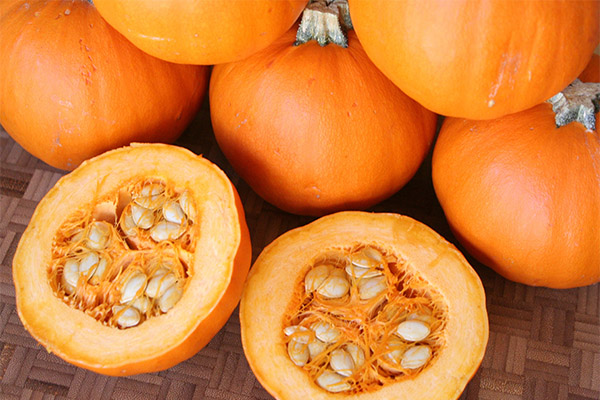
The benefits of pumpkin for children's body:
- It is very important for children to get enough fluid and not be deficient in it. Pumpkin is a vegetable that is almost 90% water.
- The vegetable saturates the body with nutrients - vitamins and minerals that are essential for children's development. For example, calcium and magnesium help in strengthening bones, phosphorus contributes to brain function, successful operation of the gastrointestinal tract, normalization of hormonal balance.
- Pumpkin is an excellent source of vitamin A, which is good for vision.
- Pumpkin contains vitamin C as well as several important biochemicals that can help protect your child from colds and flu. The vegetable also has antimicrobial properties. Cooked pumpkin, when eaten regularly, can protect against infections and disease, as well as boost your child's immune system.
- Children are not only susceptible to various infections, they can also be attacked by worms and other harmful microorganisms. It is recommended to include pumpkin in the child's diet, since this vegetable has antihelminthic properties.
- Pumpkin contains tryptophan, which helps the body to produce serotonin. This amino acid has a calming effect and stimulates sleepiness. The serotonin content of pumpkin will help your child relax better and improve their sleep.
- The product also has anti-inflammatory properties, which are extremely useful in childhood because they can suppress the development of inflammation.
In addition, pumpkin contains magnesium and calcium, which strengthen bones, and potassium helps maintain sodium hydration by regulating electrolytes. With all of these health benefits, it is important to follow the vegetable's consumption guidelines. As soon as the child passes the six-month mark and begins to eat solid food, you can safely introduce pumpkin into his diet. It is also worth noting that pumpkin seeds are not recommended for young children.
Allergic reactions to pumpkin are quite rare. But still, before introducing a new food in a child's diet, it is advisable to consult a doctor.
When losing weight
Pumpkin, or sometimes it is also called the queen of autumn, is almost the ideal product for those who want to quickly get rid of excess weight. In this case, it is not so important in what form the vegetable is served to the table. Pumpkin is low in calories and 85-90% water and is full of nutrients, proteins, fats, carbohydrates, pectins, minerals, and vitamins.
Pumpkin contains vitamin K, which regulates blood density, and vitamin T, which affects metabolism. People who sit on a pumpkin diet (it should not last more than 2 weeks), during this period it is possible to lose weight by 6-8 kilograms.
The pumpkin diet not only helps to get rid of excess weight, but also cleanses the body of toxins and slags, which also affects body weight. Such a diet includes unsweetened fruit snacks, tea or coffee without sugar and mineral water.
There are no contraindications for the use of such a diet. However, you should not experiment with it for people who suffer from diseases of the digestive organs.
Also pumpkin seeds are very useful, because they contain substances that establish metabolic processes in the body. However, it is important not to overdo it, because they are very caloric - 100 grams contains about 446 calories.
Which pumpkin is healthier
There is no definite answer to this question, because each type of pumpkin has its own benefits. Let's take a closer look at each of them.
Boiled
Boiled pumpkin preserves not all, but most of the useful substances contained in the raw fruit. Pumpkin in this preparation strengthens the immune system, helps to fight extra pounds, detoxifies the body, improves the function of the gastrointestinal tract, gets rid of edema and rejuvenates the skin. But it is also important to note that pumpkin in boiled form can also harm a person. Boiled product is not recommended to eat:
- People who suffer from diabetes;
- In the case of chronic or acute gastrointestinal diseases;
- If intolerance to the product.
Boiled pumpkin can worsen the condition, if you use it for diarrhea.
Dried
The benefits of dried pumpkin have been known for centuries. In this form it was used by healers and herbalists during the manufacture of various medicines. The product contains beta-carotene, pectin, and easily digestible sugars. The vegetable is also rich in vitamins and minerals responsible for youthfulness. Dried pumpkin has slightly more calories than fresh pumpkin - 41 kcal. At the same time, the values are still low, so dried vegetables can help in the process of losing weight.
Let's also note the disadvantages of dried pumpkin. Experts do not recommend using this product in case of acid-base balance disorders or diabetes mellitus. It is important to remember that in the case of increased acidity of gastric juice, dried vegetables can provoke gastritis and other stomach ailments.
Baked
Baking manages to preserve important vitamins and substances needed by the human body. Pumpkin in this form will help improve heart muscle and vascular health. As a prophylactic against heart problems, it is recommended to eat 200 grams of baked pumpkin every day. It will also help normalize the genitourinary system, get rid of kidney stones, prevent cystitis and pyelonephritis.
In addition, the baked vegetable is recommended for use with diabetes. The product stabilizes the nervous system, improves sleep and relieves stress. It is especially useful for liver disease, as it can act as a hepatoprotector. Pumpkin will help to cleanse the liver and restore its functions (it is important to observe the dosages). Baked product is also used for external use. From it are made mush, which are applied to the legs. Such a procedure relieves them of fatigue.
People who do not suffer from any diseases, eat this product in moderation.
Remember that pumpkin can provoke blood sugar spikes. Of course, healthy people are not particularly affected by this factor, but it can affect the condition in diabetes. Therefore, it is important to observe portions and moderation. In addition, baked vegetables can significantly burden the digestive system and have a laxative effect. Therefore, it is better not to eat baked pumpkin in case of intestinal disorders.
Raw
Raw pumpkin can probably be called the most useful. The fact is that in its unprocessed form it contains a full range of useful substances, which cannot be said about the vegetable after processing. In addition, the pumpkin in its raw form is characterized by the lowest caloric content. Therefore, it can be used for weight loss. Also raw fruits are useful in case of cardiovascular diseases. However, in order not to harm the body, you should be aware of the contraindications.
Raw pumpkin should not be consumed in cases of:
- exacerbation of gastrointestinal diseases;
- gastritis with low acidity;
- intestinal colic;
- high blood sugar levels.
It is advisable to consult a doctor before consuming raw pumpkin.
The benefits and harms of pumpkin seeds
The seeds contain a large amount of phytosterols. These compounds are very useful in the case of cardiovascular diseases and have a preventive effect, protecting the body from certain types of cancer. In addition, the substances contained in the seeds are mostly monounsaturated and polyunsaturated types of lipids, which have beneficial effects on the heart muscle.
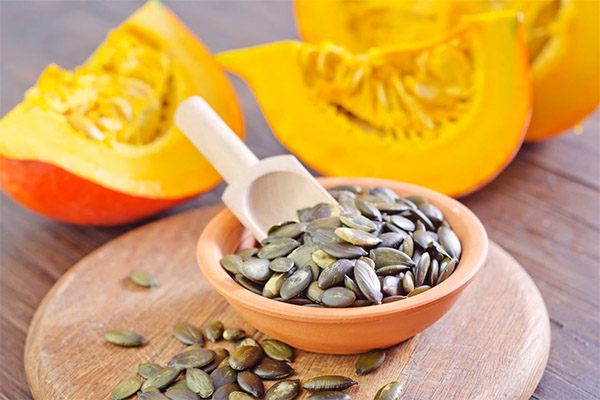
Pumpkin seeds can also help relieve symptoms of irritable bladder and relieve urinary disorders.
If you exceed the consumption rate of the seeds, you may experience dental problems, an increase in body weight, allergic reactions.
Pumpkin juice: benefits and harms
Pumpkin juice has a number of useful properties. This drink has antipyretic, wound healing, anti-toxic, antimicrobial, anti-inflammatory and anti-sclerotic effects on the body. Juice has laxative, diuretic and choleretic properties. The drink supports the metabolism, normalizes the nervous system and improves sleep quality.
Juice is not recommended to use in cases of acute GI disorders and diarrhea. It is also not recommended for people with severe diabetes, gastric and intestinal ulcers, cholecystitis and hepatitis.
Useful properties of pumpkin seed oil
Pumpkin seed oil is an excellent source of tryptophan, an essential amino acid that, when ingested, is converted into serotonin. The oil can also act as a treatment for various digestive disorders. It helps to reduce inflammation in the gastrointestinal tract and is used to get rid of intestinal parasites. Pumpkin seed oil promotes the regeneration of cells in the pancreas. It increases the body's resistance to glucose and insulin. This product has a devastating effect on cancer cells, and also gets rid of substances that are involved in the formation of stones.
The benefits of pumpkin rind
The composition of pumpkin rind contains zinc. In addition, it contains a plant protein that inhibits the reproduction of fungi. Pumpkin peel effectively fights candida, which provokes the occurrence of thrush. The peel promotes health and helps to fight various parasites. It also contains carotene, a substance that prevents cancer.
How to peel a pumpkin from a tough rind
- Wash the vegetable.
- Remove the top and bottom with a long wide knife.
- Cut the vegetable into two halves.
- Remove the seeds and fibers.
- From the top to the bottom, use a planing motion to cut off the skin.
- If the skin is too thick, first cut the fruit into slices.
Note. Nutmeg pumpkin should be cut crosswise, not lengthwise.
Pumpkin in medicine
The useful properties of this vegetable are also used in the field of medicine, especially when it comes to folk treatments. The product in boiled form is used for tuberculosis, jaundice, anemia, hypotension, gout, neuroses, cholecystitis and constipation. Raw pulp will help with burns, dermatitis, acne, freckles and skin spots. The seeds are very often used to cleanse the body of worms.
For diabetes
It is allowed to eat pumpkin with diabetes. You can eat the pulp, seeds and even drink decoctions from the roots. It is important to note that the vegetable (especially boiled) has a considerable glycemic index, although the product itself does not burden the digestive system. To maintain optimal blood sugar levels, patients should not consume more than 200 g of pumpkin per day.
Important: The glycemic index of pumpkin in raw form is 25 units, in boiled and baked form - from 75 to 85.
In pancreatitis
During the exacerbation of pancreatitis, it is forbidden to eat raw pumpkin. In this case, the vegetable can be stewed, boiled or baked in the oven (it is desirable to crush the product before cooking). Introduce it to the diet in stages. At the first reception, you can eat up to 100 g of porridge. If after consumption all is well, the volume is increased to 300 g per day. During remission, pumpkin can be eaten with milk, butter, cream, salt, sugar and pepper.
With gastritis
Pumpkin is an approved product for gastritis. In the case of a neglected form of gastritis, gastroduodenitis, erosions or ulcers, this vegetable can be included in the therapeutic diet. With the regular use of properly cooked product, it contributes to stopping the exacerbation and even accelerate the onset of the remission phase.
For the intestines
Pumpkin has laxative properties and has a positive effect on the gastrointestinal tract. The vegetable helps to eliminate toxins from the body. Pumpkin oil is especially useful for the intestines, as it improves internal organs and normalizes intestinal peristalsis.
For constipation
Pumpkin can also help in case of constipation. The vegetable has a laxative effect, so it is recommended to be consumed for this ailment.
For gout
For gout, pumpkin is allowed to be consumed because it normalizes the level of uric acid. The vegetable can be included in your standard diet, because it will not only diversify the menu, but also enrich the body with useful substances.
In colitis
In colitis, pumpkin is allowed to eat, but only in baked or lightly fried form, and the product should not have a rough crust. Also, raw and dried seeds can be included in the diet.
For the liver
Pumpkin is also good for the liver. It contains important substances - beta-carotene and other carotenoids, which help to improve the condition of liver tissues and also help to eliminate toxins.
For hemorrhoids.
Pumpkin can relieve the symptoms of hemorrhoids. The most effective in this case is the vegetable juice. For treatment, you need to squeeze the juice from the ripe fruit, strain and use 55-70 ml in the morning on an empty stomach and in the evening before a meal. The course lasts up to 4 weeks.
With cholecystitis.
Pumpkin with cholelithiasis can be eaten. Pumpkin seeds are considered to be the most useful. On their basis, special preparations for the treatment are usually prepared. In natural form, you can eat up to half a cup of seeds per day.
Recipes of folk medicine based on pumpkin
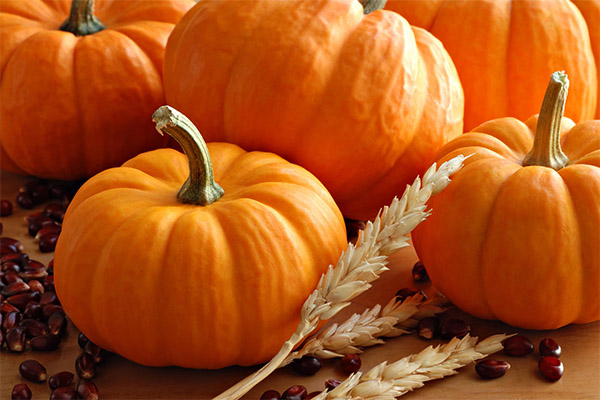
For oral problems
Mix pumpkin oil (1 tsp.) with fir oil (1 tsp.), mix and place in the refrigerator.
How to take: soak absorbent cotton in the composition and half an hour before meals to wipe the mucous membrane of the mouth.
For problems with the nervous system
Squeeze the juice from the pumpkin fruit (weighing about 1 kg).
How to take: with a neurosis to drink half a glass of freshly squeezed juice for 15 minutes before a meal, up to 2 times a day. The volume is gradually increased to 2 glasses. The course lasts for 60 days. A break is 2 weeks.
With insomnia
- Mix in a large carafe 300 g of pumpkin pulp, honey (2 tbsp.) and pour the composition of 2 liters of warm water.
- The composition to drink 2 hours before going to bed at half a cup, the course lasts two weeks.
With arthritis
Mix 50 ml of pumpkin seed oil with dried wormwood herb (2 tbsp.). Then place the mixture in a water bath for 1.5 hours. This composition to insist 48 hours, then strain.
How to take: rub twice a day for two weeks.
For the liver and gastrointestinal tract.
The herb St. John's wort and yarrow (2 tbsp.) Mix with pumpkin seed oil (200 ml). Insist this composition for 1 week, the container should be kept in a cool place without light.
How to take: 1 tsp. half an hour before a meal for a week.
Pumpkin in cosmetology
Pumpkin has a positive effect on the skin and hair. The vegetable will help to protect the skin from the harmful effects of sunlight and give the face a fresh and healthy look. The vegetable also helps to strengthen and restore the hair, making it healthier and more beautiful.
For the face
Swelling mask for all skin types
- Grate the pulp of the raw pumpkin fruit, cover the crushed vegetable on top and bottom with a sterile bandage and apply to the face.
- Hold for 20 minutes.
- Remove the mask and wash your face.
For oily skin
- Pumpkin (boiled) to mash (3 tablespoons), add an egg yolk and honey (1 tsp.).
- Apply the mask to the skin.
- Leave it on for 15 minutes. Wash the face.
For Hair
Strengthening hair mask
Ingredients:
- pumpkin juice - 200 ml;
- coconut extract (oil) - 1 tbsp;
- jojoba oil - 1 tbsp;
- oil (olive) - 1 tbsp;
- juice (lemon) - 1 tsp.
How to cook
Combine all the ingredients. Apply the mask on the hair. Leave on for 15-20 minutes. Wash hair.
Nourishing mask
Ingredients:
- pumpkin - 2 tsp;
- pumpkin juice - 4 tsp;
- egg (yolk) - 1 pc;
- oil (castor oil) - 3 tsp;
- almonds (extract) - 2 tsp.
How to cook
- The pumpkin is pounded to a pulp. Mix all the ingredients.
- Apply the mask to the hair (on the entire length).
- Hold for 30-40 minutes.
- Wash off the mask with warm water.
Harm and contraindications
Pumpkin is not recommended for use with severe diabetes. Juices of raw vegetables are contraindicated for ulcers and gastritis (with reduced acidity). Also, you should not include this product in your diet in case of allergy to the vegetable or individual intolerance.
How to choose and store pumpkin
When choosing, you should pay attention to its shape, the vegetable should be round or oval. Very often the large pumpkins are too dry or too watery. It is recommended to choose a fruit weighing no more than 3-5 kilograms. The flesh should have a deep yellow or orange color. A good fruit has a dense skin, but not "wooden".
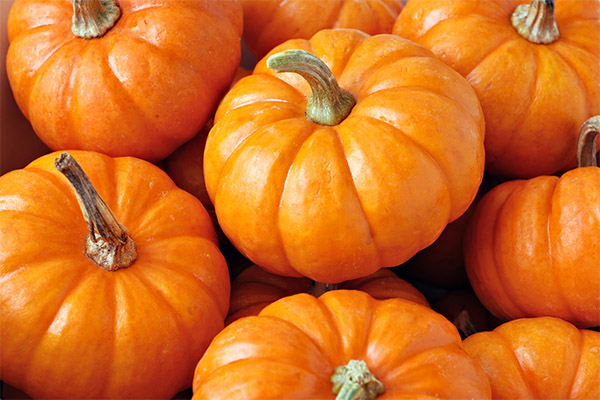
The vegetable should be stored in a dark, cool and dry place. To preserve the fruit better, you should buy the pumpkin with a stalk. The fruit should be stored with the stalk upwards and not in contact with it. You can also keep the pumpkin on the balcony under a cloth (so that it is not exposed to sunlight) at a temperature of 5-15°C.
If the vegetable has already been cut, you can put it in the refrigerator, but for a maximum of 10 days. If you wrap a piece of vegetable in foil, it can keep for about 1 month.
Can you freeze it?
To preserve the pumpkin as long as possible, it should be frozen. You can freeze raw, boiled and baked product. Any kind is suitable, and it is important that the fruit is ripe and not overripe.
How to eat pumpkin properly
Fresh pumpkin fruits are used to prepare various dishes and drinks. You can consume the pulp, seeds and juices. It will also be useful to add pumpkin seed oil to your diet.
How much can be eaten per day?
The daily rate is 150 grams of pulp (raw) and up to 2 tbsp. seeds.
Is it possible to eat at night and on an empty stomach?
Consumption of pumpkin and pumpkin juice on an empty stomach helps to cleanse the liver of toxins and improve the overall health of the body. The vegetable can also be eaten before going to bed, because it will help to get rid of insomnia.
Is it possible to eat raw pumpkin?
This vegetable is certainly also useful in its raw form, since it is in this state that it has the greatest concentration of vitamins and minerals.
What can be cooked from the pumpkin: Recipes
Soup
Ingredients:
- pumpkin - 700 g;
- carrot - 2 pcs;
- onions - 2 pcs;
- oil (vegetable) - 3 tbsp;
- potatoes - 1 pc;
- water - 1 l;
- broth (chicken) - 3 cc;
- cream (heavy) - 1 cup;
- nutmeg (ground);
- pepper (ground black) - 1 tsp.
How to cook:
- Drizzle chopped pumpkin, onion and carrots with oil.
- Preheat the oven (to 220 ° C) and put it (in a baking dish) for 40 minutes (until softened).
- Boil the water and boil the sliced potatoes (this will take 20 minutes).
- Put all the ingredients in the blender to chop.
- Pour the soup into the pot and simmer.
- Add cream, season and season with salt.
Porridge
Ingredients:
- pumpkin - 400 g;
- milk - 1 tbsp;
- salt - 1/2 tsp;
- sugar - 1/2 tsp;
- Butter (butter) - 2 tsp.
How to cook:
- Peel and chop the pumpkin (finely).
- Pour into the boiling milk.
- After boiling, put on low heat and cover for 20 minutes.
- Process the pumpkin in a blender or rub it through a sieve.
- Add the butter and sugar and season with salt.
- Stir and serve.
Fritters
Ingredients:
- pumpkin - 400 grams;
- 2 eggs - 2 pcs;
- flour - 5 tablespoons.
How to cook:
- Peel the vegetable and chop it on a grater.
- Add eggs, flour, salt (you can add vanilla, nutmeg or cinnamon).
- Fry fritters in vegetable oil.
- Serve with sour cream.
Cutlets
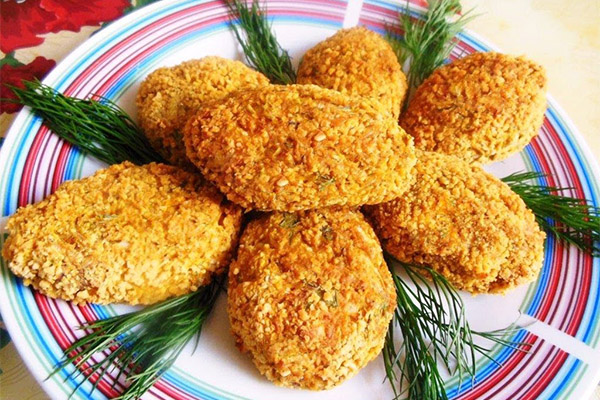
Ingredients:
- pumpkin pulp - 500 g;
- cream - 100 grams;
- Egg - 3 pcs;
- semolina - 4 tbsp;
- breadcrumbs (breadcrumbs) - 100 g;
- sugar - 1 tbsp;
- Oil (vegetable) - 2 tbsp.
How to cook:
- Grate the pumpkin, squeeze the juice.
- In a heated pan put pumpkin, cream and stew (5 minutes).
- Add semolina, sugar, salt and mix.
- Braise pumpkin (15 minutes) and let cool.
- In the mass add the yolks and stir, whisk the whites in one container, in another pour the breadcrumbs.
- Form cutlets, then dip them in whites and then roll in breadcrumbs.
- Heat oil in a frying pan, put the cutlets on it, fry both sides.
- Serve hot, with sour cream.
Caviar
Ingredients:
- pumpkin - 400 g;
- pepper (sweet) - 1 pc;
- Onion (onions) - 1 head;
- garlic - 2 tooth;
- tomato paste - 2 tablespoons.
How to cook:
- Slice the pumpkin.
- Chop the onion (finely) and dice the pepper.
- Pour 1-2 spoons of oil (vegetable) into a saucepan, add the pepper and onion, fry until softened, add chopped garlic.
- Add pumpkin, salt and stir in the pan, fry for 2 minutes, cover with a lid and put on low heat to simmer (about half an hour) until the pumpkin softens.
- Add the tomato paste, ground black pepper and salt, stir and simmer for about 10 minutes.
- Chop the caviar in a blender.
- Put it in a jar and seal.
Cucates
Ingredients:
- granulated sugar - 700 g;
- water - 1 tbsp;
- pumpkin pulp - 2 kg;
- orange - 2 pcs.
How to prepare:
- Peel the oranges, cut the pumpkin into cubes. Cut the citrus fruit into slices.
- Put water and sugar in a saucepan and bring to a boil. Cook (stirring at the same time) until the sugar has dissolved.
- Drop the oranges and pumpkin into the pot. Boil for about 6 minutes.
- Take it off the stove and let it cool down. Repeat the boiling 2 more times (at intervals of 8-12 hours).
- Separate the candied fruit from the syrup. Place the oranges and pumpkin in a colander or sieve.
- Place the pumpkin on a baking tray (cover it with baking paper) and put it in a slightly heated oven for 5 hours.
- In a bowl mix a little powder with vanilla, cinnamon and starch and sprinkle the candied fruits with this mixture.
Jam
Ingredients:
- pumpkin - 1 kg;
- sugar - 1 kg;
- water - 1,5 tbsp.
How to cook:
- Put water on the fire, add sugar. Boil until the syrup begins to drip from the spoon with a thin thread.
- Peel and cut into cubes (1 cm) pumpkin, pour the syrup and put on low heat. Boil until it is ready.
- Pour the jam in jars and seal.
Compote
Ingredients:
- water - 1 l;
- granulated sugar - 1 tbsp;
- pumpkin pulp - 500 gr;
- cloves - 6 stars;
- lemon - 1 pc.
How to prepare:
- Peel and chop the pulp of the vegetable.
- Boil water, add sugar and cloves. When sugar dissolves, add pumpkin. Boil it for about 15 minutes.
- Squeeze out the lemon juice and add it at the last stage of cooking the compote.
- Cool the compote.
Juice

Ingredients:
- pumpkin pulp - 1 kg;
- water - 2 liters;
- sugar - 250 grams;
- lemon - 1 pc.
How to cook:
- Place the pumpkin in a saucepan (coarsely grated).
- Pour the pumpkin with water (with sugar), put on the fire (low). Cook for 15 minutes, stirring constantly.
- Cool and rub through a sieve (fine).
- The resulting mass is placed in a saucepan. Peel lemon and add it to the pot. Put it to boil. After boiling, simmer for another 10-15 minutes.
- Pour the drink into jars, seal and wrap.
Smoothie
Ingredients:
- apple - 2 pcs;
- pumpkin - 1 tbsp;
- honey - 2 tbsp;
- water - 150 ml;
- cinnamon - 1/2 tsp.
How to cook:
- Peel and chop the pumpkin into pieces.
- Put all the ingredients in a blender (if desired, add cinnamon) and whip (2 minutes).
- Pour into glasses.
Baked Pumpkin
Ingredients:
- pumpkin - up to 1-1.5 kg;
- Butter (butter) - 50 gr.
How to cook:
- Turn on the oven, put the pumpkin (the whole fruit) on a parchment-lined baking sheet.
- Bake for 60 minutes (temperature 200°C).
- Cut the pumpkin into pieces and peel.
- Pour melted butter over the baked pumpkin.
Can we give pumpkin to pets?
Dogs can be given this vegetable, but only in boiled form. It is especially useful for stool disorders and abdominal pain. For cats, pumpkin is also not contraindicated. Boiled pulp is the most suitable option for them. Before boiling, it is necessary to remove the skin and core.
Interesting facts about pumpkin

- A pumpkin can contain about 500 seeds. The average one yields about one cup of seeds.
- In 2016, Belgium managed to grow a pumpkin weighing 1,000 kg.
- Antarctica is the only continent where pumpkins do not grow.
- When most people think of a pumpkin, they usually picture an orange vegetable, but the berries can be green, red, white, and yellow.
- The Irish were the first to carve vegetables for Halloween and at one time put burning coals in them instead of candles. Irish immigrants brought their customs to America, and found that it was much easier to carve the right fakes out of a pumpkin, so they started using that particular vegetable.
- The largest pumpkin pie weighed about 1,670 pounds.
- There are more than 45 different varieties of this crop.
- It takes about 35 pumpkins to make one liter of oil from the seeds.
«Important: All information on this site is provided for informational purposes only for information purposes only. Before applying any recommendations, please consult a specialist. specialist. Neither the editors nor the authors are liable for any possible harm caused by materials."

